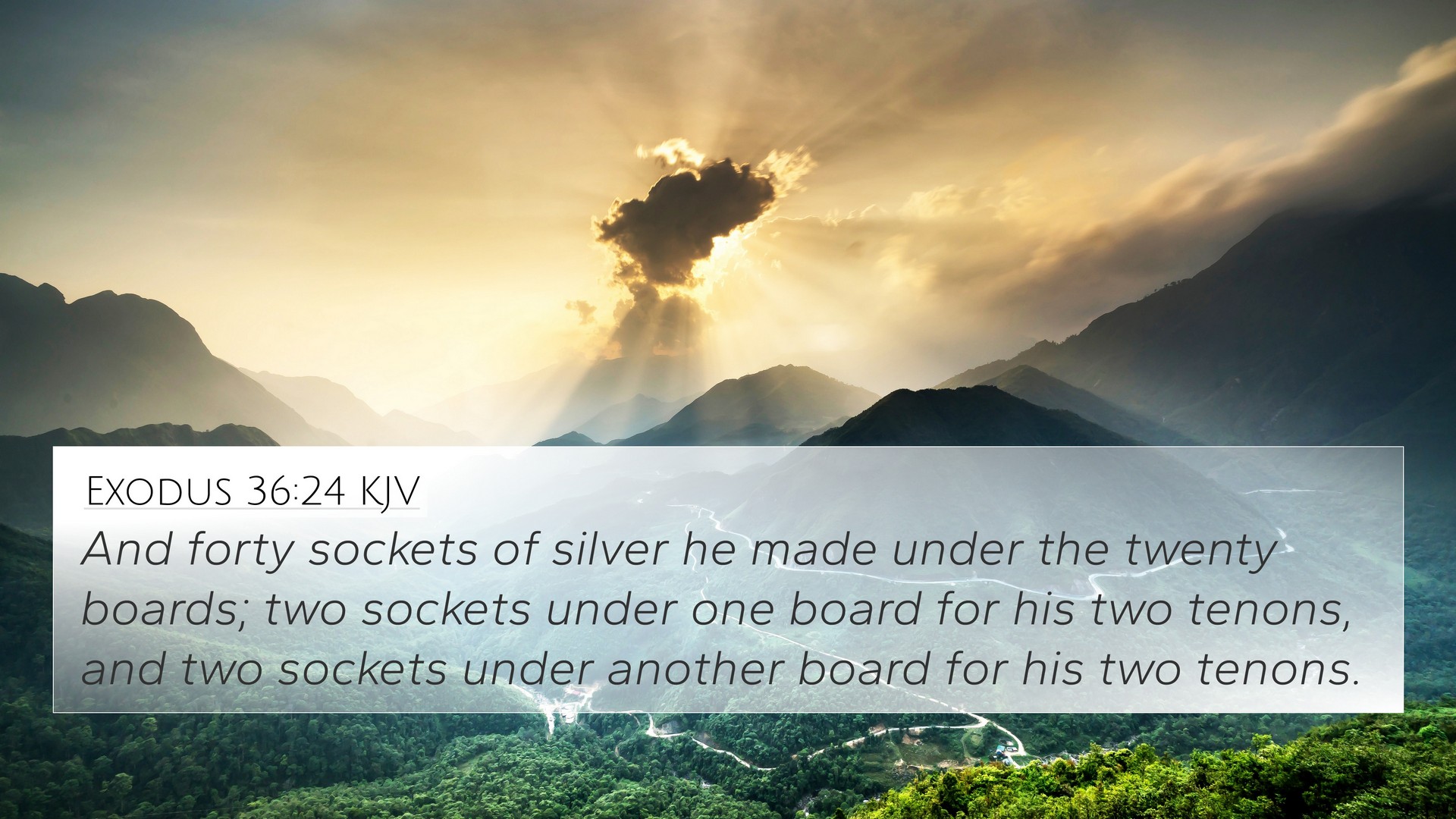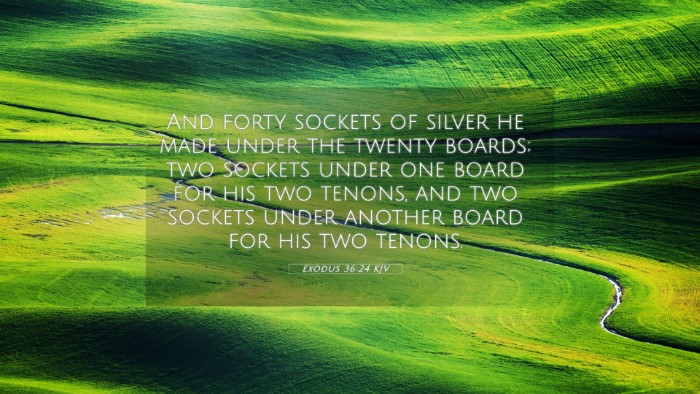Understanding Exodus 36:24
Exodus 36:24 (KJV): "And he made boards for the tabernacle of shittim wood, standing up."
Summary of Exodus 36:24
Exodus 36:24 describes the construction of the boards for the Tabernacle, which were made of acacia wood (shittim wood). This verse is part of the intricate instructions God gave to Moses for assembling the place of worship, highlighting the importance of materials and craftsmanship in creating a dwelling place for God among His people.
Thematic Insights
Exodus 36:24 holds significant importance in understanding God's desire to dwell among His chosen people.
- The Tabernacle as a Divine Dwelling: This passage relates to God's instructions on building the Tabernacle, which represents His presence among His people.
- Materials Used: The specific mention of "shittim wood" emphasizes the quality required for sacred items, reflecting both durability and divine command.
- Significance of Structure: The boards standing up can symbolize strength and stability in faith and worship.
Cross-References
In exploring Exodus 36:24, it is valuable to consider various Bible verse cross-references. Here are some scriptures that relate closely:
- Exodus 25:10: Discusses the making of the Ark of the Covenant, which parallels the sacred nature of the Tabernacle's construction.
- Exodus 26:15: Details the boards and their construction, providing deeper insight into the architecture of the Tabernacle.
- Hebrews 9:1-5: The New Testament reflection on the earthly Tabernacle and its significance, linking it to Christ’s fulfillment.
- Revelation 21:3: Points to God's ultimate dwelling place with humanity, connecting the Tabernacle's purpose with heavenly promises.
- 1 Corinthians 3:16: Illustrates believers as the temple of the Holy Spirit, drawing parallels to God’s dwelling among His people.
- 2 Samuel 7:6-7: Here, God speaks of not dwelling in a house, which connects to the understanding of God’s presence being with His people.
- Galatians 5:25: Shows how believers are called to live in the Spirit, emphasizing the continued presence of God.
- Matthew 1:23: The prophecy of Jesus as "Emmanuel," meaning "God with us," echoes the themes in Exodus.
- Psalm 27:4: Desires to dwell in the house of the Lord, reminiscent of the intention behind the Tabernacle.
- John 1:14: "The Word became flesh and made his dwelling among us," bridging the Old Testament and the New Testament in divine presence.
Comparative Bible Verse Analysis
This verse not only emphasizes the technical aspects of the Tabernacle's construction but also represents deep spiritual truths. The materials used, such as shittim wood, were chosen for their strength and resilience, symbolic of the enduring nature of God's promises and presence. This is echoed in various scripture passages across both the Old and New Testaments.
How to Use Bible Cross-References
Understanding passages like Exodus 36:24 in the Bible benefits immensely from cross-referencing Biblical texts. Here are some practical tools:
- Bible Concordance: A tool that provides alphabetical listings of words and their corresponding verses.
- Bible Cross-Reference Guide: Specific editions of Bibles that highlight related verses and themes in the margins.
- Cross-Reference Bible Study: Engaging with the Bible by following thematic connections can yield deeper insights.
Implementing Cross-Referencing Study Methods
To effectively find cross-references for specific Bible verses, one might:
- Identify Key Themes: Pinpoint the main ideas of a verse and search for similar concepts throughout Scripture.
- Use a Study Bible: Leveraging notes and references can provide instant cross-references.
- Engage with Biblical Commentaries: Tools like those from Matthew Henry, Albert Barnes, and Adam Clarke can provide rich insights and historical context.
Conclusion
In conclusion, Exodus 36:24 is a window into God's design for His dwelling with humanity, reflected in His instructions for the Tabernacle. Through scriptural cross-referencing, we can uncover layers of meaning that connect this verse with the overall narrative of Scripture, revealing God's enduring promise to be present with His people.


